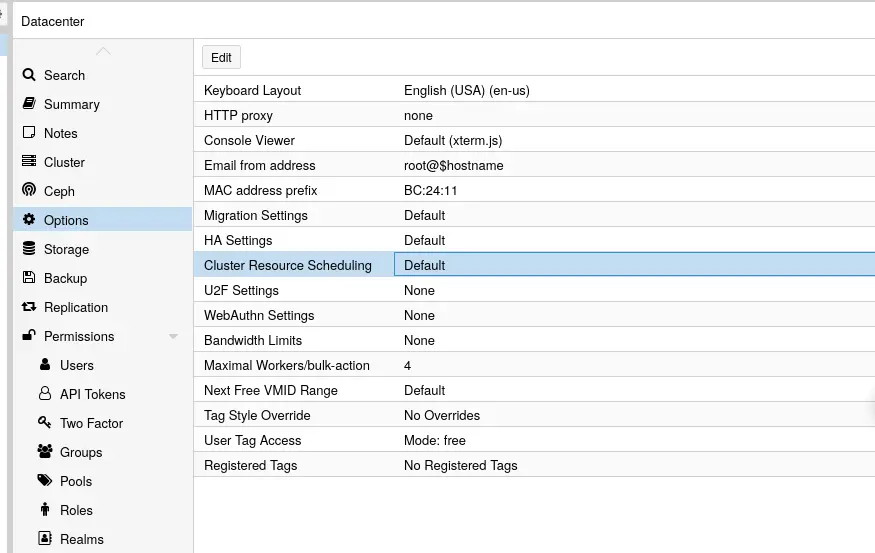As you all might be aware VMware is hiking prices again. (Surprise to no one)
Right now Hyper-V seems to be the most popular choice and Proxmox appears to be the runner up. Hyper-V is probably the best for Windows shops but my concern is that it will just become Azure tied at some point. I could be wrong but somehow I don’t trust Microsoft to not screw everyone over. They already deprecated WSUS which is a pretty popular tool for Windows environments.
Proxmox seems to be a great alternative that many people are jumping on. It is still missing some bigger features but things like the data center manager are in the pipeline. However, I think many people (especially VMware admins) are fundamentally misunderstanding it.
Proxmox is not that unique and is built on Foss. You could probably put together a Proxmox like system without completely being over your head. It is just KVM libvirt/qemu and corosync along with some other stuff like ZFS.
What Proxmox does provide is convenience and reliability. It takes time to make a system and you are responsible when things go wrong. Doing the DIY method is a good exercise but not something you want to run in prod unless you have the proper staff and skillset.
And there is where the problem lies. There are companies are coming from a Windows/point in click background who don’t have staff that understand Linux. Proxmox is just Debian under the hood so it is vulnerable to all the same issues. You can install updates with the GUI but if you don’t understand how Linux packaging works you may end up with a situation where you blow off your own foot. Same goes for networking and filesystems. To effectively maintain a Proxmox environment you need expertise. Proxmox makes it very easy to switch to cowboy mode and break the system. It is very flexible but you must be very wary of making changes to the hypervisor as that’s the foundation for everything else.
I personally wish Proxmox would serious consider a immutable architecture. TrueNAS already does this and it would be nice to have a solid update system. They would do a stand alone OS image or they could use something based on OStree. Maybe even build in a update manager that can update each node and check the health.
Just my thoughts
I think you are looking at this wrong. Proxmox is not prod ready yet, but it is improving and the market is pushing the incumbent services into crappier service for higher prices. Broadcom is making VMware dip below the RoI threshold, and Hyper-v will not survive when it is dragging customers away from the Azure cash cow. The advantage of proxmox is that it will persist after the traditional incumbents are afterthoughts (think xenserver). That’s why it is a great option for the homelab or lab environment with previous gen hardware . Proxmox is missing huge features…vms hang unpredictably if you migrate vms across hosts with different CPU architectures (Intel -> AMD), there is no cluster-wide startup order, and things like DRS equivalents are still separate plugins. That being said knowing it now and submitting feedback or patches positions you to have a solution when MS and Broadcom price you out of on-prem.
Hyper-v will not survive when it is dragging customers away from the Azure cash cow
Pretty sure that’s why they made Azure Stack HCI, it’s hyper-v, but doesn’t work without an up to date azure subscription and charges you monthly fees to run vms on hardware you own.
It’s great, the worst of both worlds… Fucking thing doesn’t even report on disk provisioned, only utilization, so get fucked it you want to capacity plan without writing your own report script.
Proxmox has those features. Also I personally wouldn’t mix CPU archs but you should be able to as it is all KVM. Maybe there is a different memory layout or something
I’m battling this right now; it SHOULD work but does not work consistently. Again, homelab, not ideal environment. I’m going from 2 R710’s with Xeons to a 3-node cluster with the 710’s and an EPYC R6525. Sometimes VM’s migrate fine, sometimes they hang and have to be full reset. Ultimately this was fine as I didn’t migrate much, but then I slapped on a DRS-like thing, and I see it more. I’ve been collecting logs and submitting diagnostics; even pegging the VM’s to a common CPU arch didn’t fix it.
To that end, DRS alternatives are still mostly plugins. This was the go-to, but then it was abandoned:
https://github.com/cvk98/Proxmox-load-balancer
And now I’m getting ready to go deeper into this, but I want to resolve the migration hangs first:
Proxmox has load balancing capabilities built in. You can just toggle it on and Proxmox will level everything out. However, if you are having issues with VMs hanging I would get that resolved first.
I’ve never done a live transfer between AMD and Intel so maybe there is more to the story. Make sure you get on the Proxmox forms as that’s where the developers hang out.
Where do you see the load balancing feature? Searching for exactly that was what got me to ProxLB. I have HA groups and fences, but that’s less resource allocation than failure resolution in my experience. My cluster is 8.2.7.
I posted to the forums, but I got a “YMMV” kind of answer; the docs say it’s technically unsupported: https://pve.proxmox.com/pve-docs/chapter-qm.html#_requirements
The hosts have CPUs from the same vendor with similar capabilities. Different vendor might work depending on the actual models and VMs CPU type configured, but it cannot be guaranteed - so please test before deploying such a setup in production.
I’m setting the CPU Type to x86-64-v2-AES which is the highest my westmere CPU’s can do. I have a path to getting all 3 nodes to the 6525 hardware, pending some budget and some decomm’s at work.

I’ve read extensively about that, and this thread was very helpful, and my understanding is that’s still not really a DRS equivalent, but more of a recovery mode: https://forum.proxmox.com/threads/ha-cluster-resource-scheduling-filling-in-the-missing-pieces-from-the-docs.139187/
Yeah I just know it goes beepity boop and then the VMs move around. My deployment is also pretty small so it really doesn’t matter for me.
This seems like an unnecessary dichotomy. Infrastructure has to be maintained, period. If you don’t want to maintain it yourself, pay a provider to maintain it for you. If you want to maintain it yourself, you damned we’ll be interested in understanding all the parts of it. Setting up a hypervisor in the office to ‘set it and forget it’ is not the way to do this.
Been using KVM fir years. Works fine for me.
I assume you are using libvirt? Do you setup VM fail over?
I have made a comparison in recent weeks between proxmox and xcp-np/Xen Orchestra and for me proxmox is not mature enough for a work in production considering different aspects. Xcp-ng, if I see it as a solid option, especially if you pay for the Xen Orquestra subscription, which in addition to unleashing the integral management of your entire xcp-ng park, also allows you to make backups
I’m going to be evaluating Nutanix and Azure Stack HCI. Proxmox just doesn’t fit in what I can find support for and admins to support it.
Nutanix is not especially cheap, in my opinion/experience, nor is it particularly easy to manage and maintain
I managed about 4 clusters form some time and found it pretty simple. As for cost, it’s more about getting away from VMware.
Are you Azure focused?
If you are an Azure shop go with Azure Stack HCI. I haven’t use it personally but I see a lost of Reddit comments about it.
Proxmox sortof mangles the kernel and I find it frustrating to use from the command line. (I have also blown off my foot once or twice.) I would use Incus instead. Incus doesn’t require its own distro, so you could install it on an immutable distro.
If I were purely running VMs that didn’t need access to USB hardware I might go with XCP-ng.
I personally don’t see much reason to use LXC. Sure it theoretically is faster but it creates lots of headaches. I do use LXC but for only for simple things like jump boxes.
Be wary or leery of making changes, not weary.
Good catch
I hear it all the time, and it jumps out at me. Sorry for being that guy lol.
deleted by creator
I do wish Proxmox would move to a immutable architecture like TrueNAS. It should have a read only root with automatic rollbacks. Ideally there should be a overlay filesystem that allows for changes without compromising the underlying system.
I’m not sure I’m parsing your fifth paragraph correctly. Are you suggesting Proxmox is DIY and unsuitable for Production? That Proxmox is suitable for Production and those who think they can roll their own hypervisor are in for a bad time? Something else?
Running on Debian is pretty close to immutable, as long as you don’t do anything silly with the underlying OS besides run Vanilla proxmox. Reinstalling Proxmox and restore /etc/pve is as hard as it gets, and if you get really fancy you can install the PBS client right on the nodes and back them up fully to the same place you backup the guests.
I’ve used Proxmox for years now (used to mod the reddit /r/proxmox sub along with Jim Salter) and I would be comfortable running it in enterprise in anger. As a former VCP, I appreciate the transparency of Proxmox, and like you say, it’s really just an amalgamation of standard services with a nice front end and a bunch of automation in the background that you can tear into if you need to.
And Proxmox Backup Server is everything I ever wanted in a backup system for it, I’d put it head to head with Veeam and other VMWare solutions.
Promox is not immutable. Immutable Linux uses a read only filesystem. They normally have automatic role backs and updates usually take the form of deltas. (Not always)
The benefit is that the system is highly predicable and updates only apply on a reboot. If there is a bad update it just fails the self test and then rolls back. This is way more dynamic than stock Debian.
I think you might be confusing stability with immutably
Of course I realize that. But Debian is perfectly fine as a base for proxmox because of its stability, and if you aren’t doing silly things like installing docker on the host, its not going to be an issue.
It can be though if you start messing around. For instance I had an issue with a newer kernel so I downgraded only to find that it wouldn’t boot. (ZFS can be upgraded but not downgraded)
I guess the big takeaway is don’t shoot yourself in the foot
Hyper-V is probably the best for Windows shops but my concern is that it will just become Azure tied at some point. I could be wrong but somehow I don’t trust Microsoft to not screw everyone over.
Funny you should say this, because they are actually working on a Hyper-V stack with Intel’s Cloud Hypervisor (VMM) atop the Microsoft Hypervisor microkernel (MSHV) with support for Linux as the root partition (i.e. “Dom0”). No Windows/Azure required.
https://scholz.ruhr/blog/hyper-v-on-linux-yes-this-way-around/
https://www.phoronix.com/news/Microsoft-Hyper-V-Dom0-Linux
At this point the biggest hurdle is the microkernel being publicly released as a standalone component.







